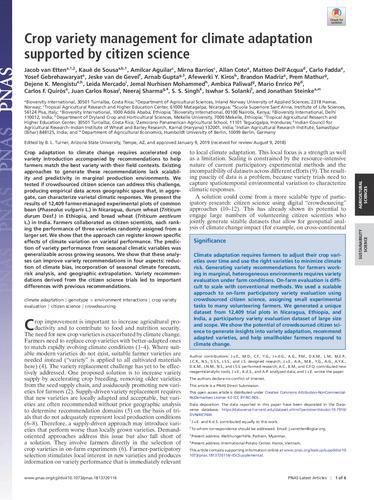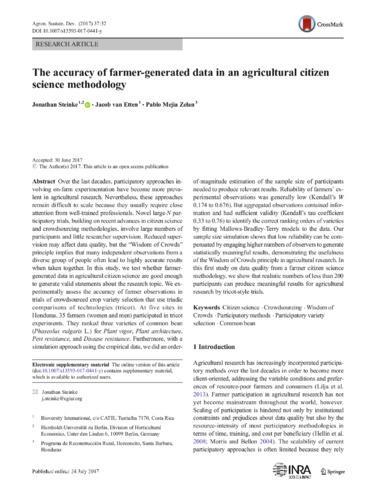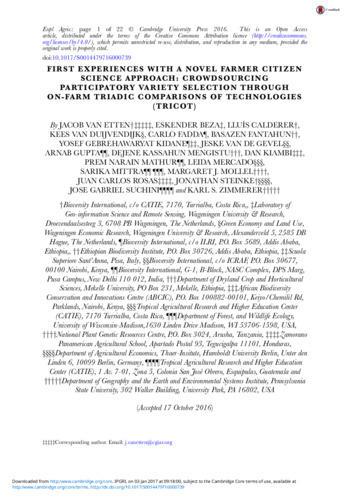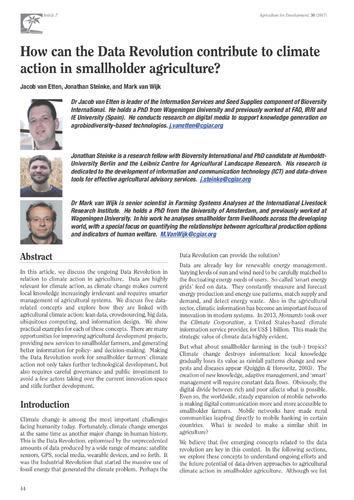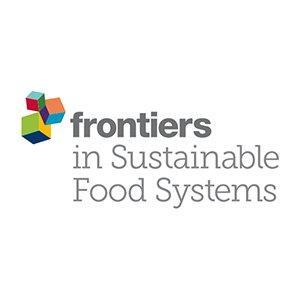Tricot (Triadic Comparisons of Technologies)

Tricot (Triadic comparison of technologies) is a methodology that empowers farmers to identify the most suitable technologies for the local conditions of their own farm. Instead of crop varieties and other technologies being tested in large-scale field plots under standard conditions, Tricot allows them to be tested directly in farmers’ fields, in realistic conditions, and taking into account farmers’ variable contexts. Farmers, testing and validating new and promising technologies like crop varieties, become ‘farmer researchers’.
With a tricot approach, research centers get the opportunity to validate and disseminate new technologies ‘massively’ and in a participatory way, collaborating with a large number of participants under diverse conditions. Valid results about the qualities of different technologies (e.g. various varieties of one crop) can be generated from a large number of trials in different environments. Important criteria for adoption into practice, which are easily overlooked at researcher-managed trials, are accounted for by the participants. Therefore, higher technology adoption rates and a stronger impact of the research on farming can be expected.
Tricot: the technical details
In what context is this tool useful?
If you are a researcher, extension agent or NGO actor working with agricultural development, you may find Tricot useful. A methodological guide can support you in ten steps to learn how to establish and carry out a Tricot project, involving many farmers as on-farm researchers and as beneficiaries of the new technologies. Although every tricot project will be different, this guide contains all the information you need to know to be able to design one of your own.
Tricot can be used for many different technologies, but this methodological guide focuses on crop varieties.
Tricot: planning and partnerships
Results achieved
The benefits of the tricot approach are evidenced by some of our partners, the Rwanda Agriculture and Animal Resources Development Board and the One Acre Foundation, now adopting the methodology for their own variety selection research.
An important benefit of tricot is the possible reduction of trial costs, which could drive its adoption across different organizations, apart from the improved insights that it produces. Precise cost comparisons are difficult as there is no gold standard to compare with. Both ‘conventional’ participatory variety selection and tricot can be implemented in different ways. If both are implemented in a very intensive way (organizing farmer groups, meetings, working with RTB seed materials), the cost reduction is estimated to be roughly 40%. At the other extreme, a tenfold cost reduction is possible in the US, where farmers receive seeds by mail and are connected by smartphones. One reason for cost reduction is that some costs are externalized to farmers who volunteer to execute mini-trials using their own labor, land and inputs. This raises the question whether farmers’ motivation to participate is sufficiently enhanced by tricot to justify this investment. Previous studies showed that farmers’ motivation to participate in tricot is mainly related to access to seeds and information (Beza et al., 2017).
Further cost reductions are possible if farmer networks are maintained over time, if they are serviced through channels that are also used for other means (credit provision, for example), and if they can reach economies of scale by testing varieties and other options for multiple crops. Tricot would make it possible for breeders and agronomists to ‘outsource’ trials to farmer-facing organizations. Alternative business models have already been introduced in the US context by organizations such as the Farmer Business Network, FIRST (Farmers’ Independent Research of Seed Technologies), and SeedLinked. The latter uses the tricot approach for its trials.
The Alliance of Bioversity International and CIAT is exploring alternative business models following this trend focusing on the global South. Research is ongoing within RTB to determine the best scaling strategies for Rwanda and Ghana.
Variations on this method
Originally developed for evaluating seed varieties, Tricot can be adapted to suit the needs of different projects that need to gain farm-specific or locality-specific information.
In Rwanda, it was adapted to evaluate consumer preferences, with more than 100 consumers sharing their preferences on potato varieties using the tricot approach. Participants were invited to rank their preferred potato varieties, identifying their favorite in terms of taste, appearance, and other characteristics. The initial results from this exercise highlighted that consumers’ preferences were notably different from producers. These results reinforce the need for a full value-chain analysis of varieties before recommending them for release.

